


Savoring The Subtle Pleasures
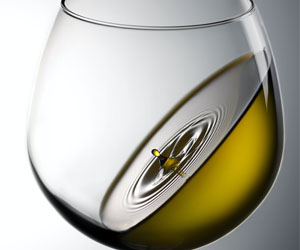
Wine tasting is a nuanced art that elevates the enjoyment of this ancient beverage to a sophisticated and sensory experience. While anyone can pour a glass of wine and take a sip, delving into the intricate world of wine tasting requires practice, knowledge, and an acute awareness of the senses. In this article, we explore the art of wine tasting, offering insights into the techniques and appreciation that enhance the enjoyment of this timeless elixir.
The Five Senses: Wine tasting engages all five senses, creating a symphony of perception that allows connoisseurs to appreciate the full spectrum of a wine's character.
Sight: The visual assessment of wine begins with its color and clarity. Hold your glass up to the light and observe the hue, which can range from pale straw to deep ruby or even amber. The intensity and clarity of the color provide initial clues about the wine's age and variety.
Smell: The olfactory sense is crucial in wine tasting. Swirl the wine gently in your glass to release its aromas and then take a moment to inhale. Note the wine's bouquet, identifying various scents like fruit, flowers, spices, or oak. The aroma can provide insights into the wine's age, origin, and quality.
Taste: This is the heart of the wine tasting experience. Start with a small sip, allowing the wine to coat your palate. Assess the wine's flavors, acidity, sweetness, and tannins. Look for complex layers of taste, from the initial impression to the finish. Consider the balance and harmony of the wine's components.
Touch: The tactile sensation of wine is an often-overlooked aspect. Assess the wine's body or weight on the palate. Is it light, medium, or full-bodied? The texture should be smooth and pleasing, with the right level of astringency from tannins.
Sound: While it might not be as prominent, the sound of wine plays a role in the overall experience. When you slurp the wine, the sound can provide clues about its viscosity and body. Experienced tasters often make a slight slurping sound to aerate the wine as it passes through their palate.
The Art Of The Swirl And Sip: The gentle swirl of the wine in the glass releases its aromas, allowing you to take in the full bouquet. This practice aerates the wine, which can enhance the aromas and flavors.
Taking small sips and holding the wine in your mouth allows for a thorough evaluation of its taste and texture. The art of wine tasting involves paying attention to the wine's complexity, noting the interplay of fruit, acidity, and tannins.
The Art Of Terroir: Terroir, the unique combination of soil, climate, and geography of a specific wine region, is a fundamental concept in wine tasting. Understanding how terroir influences a wine's character is integral to appreciating its nuances. The same grape variety can produce vastly different wines when grown in distinct terroirs.
The Art Of Wine And Food Pairing: Another facet of the art of wine tasting is pairing wine with food. The right combination can elevate both the wine and the dish, creating a harmonious dining experience. Consider the wine's flavor, body, and acidity when selecting complementary food.
The art of wine tasting is a journey of sensory exploration. It involves engaging all five senses, from the visual assessment of the wine's color to the nuanced interpretation of its aroma, taste, and texture. With practice and an ever-curious palate, anyone can develop a deep appreciation for the art of wine tasting, uncovering the subtleties and complexities that make wine a captivating and enduring elixir. Whether you're a novice or an experienced oenophile, the art of wine tasting offers a lifetime of discovery and enjoyment.



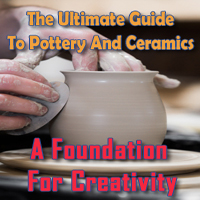
The Artistry In Every Stitch
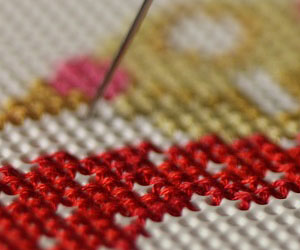 Quilting: Quilting is a technique that marries practicality and artistry. Quilts are made by stitching layers of fabric together, often with intricate patterns. Traditional quilt designs tell stories and are passed down through generations. Quilting stitches can be simple or highly detailed, adding depth and warmth to these cherished heirlooms.
Quilting: Quilting is a technique that marries practicality and artistry. Quilts are made by stitching layers of fabric together, often with intricate patterns. Traditional quilt designs tell stories and are passed down through generations. Quilting stitches can be simple or highly detailed, adding depth and warmth to these cherished heirlooms.
Cross-Stitch: Cross-stitch is known for its precise, grid-based patterns created by "X" stitches. It is a popular choice for decorative items like samplers and personalized gifts.
Crafting Unique Brews In Your Kitchen
 Homebrewers often find inspiration in their surroundings and experiences. They may draw from their local environment, incorporating indigenous ingredients or regional flavors into their brews. For instance, someone living near a citrus orchard might use fresh oranges in their recipe, imparting a distinct regional character to the beer. Such a creative approach not only results in delicious brews but also connects the beer to a specific place, making it a unique and memorable experience.
Homebrewers often find inspiration in their surroundings and experiences. They may draw from their local environment, incorporating indigenous ingredients or regional flavors into their brews. For instance, someone living near a citrus orchard might use fresh oranges in their recipe, imparting a distinct regional character to the beer. Such a creative approach not only results in delicious brews but also connects the beer to a specific place, making it a unique and memorable experience.
Experimentation is another cornerstone of homebrewing creativity. Homebrewers are constantly tinkering with their recipes, trying new techniques, and pushing the boundaries of what's possible. This willingness to take risks leads to the discovery of innovative flavor combinations and brewing methods. Whether it's aging beer in oak barrels, using wild yeast strains, or adding unconventional ingredients like herbs and spices, the homebrewing world thrives on experimentation.
Furthermore, the craft beer movement has been instrumental in driving homebrewing creativity. As craft breweries continue to innovate and develop new styles, homebrewers often follow suit. They adapt commercial trends and make them their own, experimenting with hazy IPAs, sour ales, and barrel-aged wonders. The exchange of ideas between professional brewers and homebrewers has enriched both communities, resulting in a diverse spectrum of beer styles and flavors.
Community plays a crucial role in fostering creativity among homebrewers. Beer enthusiasts often gather in local homebrew clubs, online forums, and social media groups to share their experiences, knowledge, and creative ideas.
Techniques For Discerning Palates
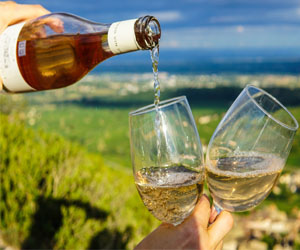 Clarity: Assess the clarity of the wine. A hazy appearance might indicate issues with the wine's production, while crystal clarity suggests quality and careful handling.
Clarity: Assess the clarity of the wine. A hazy appearance might indicate issues with the wine's production, while crystal clarity suggests quality and careful handling.
Viscosity: Swirl the wine gently in the glass and observe the "legs" or "tears" that form on the side of the glass. Thicker legs indicate a higher alcohol content or residual sugar, which can provide clues about the wine's body.
2. Aroma Exploration: The aroma, or bouquet, of a wine is a critical aspect of the tasting experience. Swirl the wine in your glass to release its aromas, then take a moment to inhale. Wine's bouquet can be quite complex, and it's where the magic begins.
Primary Aromas: Primary aromas are derived from the grape variety itself. For instance, Chardonnay often exhibits scents of green apple or citrus, while Cabernet Sauvignon might have blackberry or black currant notes.
Secondary Aromas: These come from the fermentation process and often include scents like bread, yeast, or vanilla, particularly in the case of oak-aged wines.
Tertiary Aromas: Tertiary aromas develop during aging and might include earthy, spicy, or nutty notes.
3. Sip And Savor: Take a small sip of the wine and let it coat your palate. Assess the wine's taste, noting its flavors, acidity, sweetness, and tannins. Consider the balance and harmony of these elements.
Flavors: Describe the flavors you perceive, which can range from fruity and floral to earthy and spicy.
Nurturing Your Inner Glow
 Nourishing From Within
Nourishing From Within
The skin is often considered a mirror of one's overall health, and health-conscious beauty acknowledges this fact. Consuming a balanced diet rich in vitamins, minerals, and antioxidants provides the essential building blocks for healthy skin and hair. Nutrient-dense foods, such as leafy greens, colorful fruits, and omega-3-rich fish, can contribute to a radiant complexion and lustrous locks.
Hydration is another cornerstone of health-conscious beauty. Proper hydration not only keeps the skin plump and glowing but also supports the body's natural detoxification processes. Drinking an adequate amount of water, along with herbal teas and hydrating foods, can help maintain skin's elasticity and clarity.
Clean And Mindful Skincare
While external beauty products aren't shunned in health-conscious beauty, the focus is on clean and mindful skincare choices. Avoiding products containing harmful chemicals and opting for natural or organic alternatives is essential. These choices help protect not only the skin but also the environment.
Consistent skincare routines, tailored to individual skin types and concerns, are also encouraged. These routines may incorporate natural ingredients such as aloe vera, tea tree oil, and chamomile for their soothing and healing properties.
A Sustainable Lifestyle For A Better Future
 Reduce, Reuse, Recycle: This timeless mantra forms the foundation of green living. Reducing consumption, reusing items when possible, and recycling materials are essential steps in minimizing waste.
Reduce, Reuse, Recycle: This timeless mantra forms the foundation of green living. Reducing consumption, reusing items when possible, and recycling materials are essential steps in minimizing waste.
Energy Efficiency: Green living encourages energy-conscious choices such as using energy-efficient appliances, properly insulating homes, and turning off lights and electronics when not in use.
Sustainable Transportation: Opting for eco-friendly modes of transportation, such as biking, walking, carpooling, or using public transit, reduces carbon emissions associated with personal vehicles.
Sustainable Food Choices: Adopting a diet rich in locally sourced, organic, and plant-based foods can reduce the carbon footprint associated with food production and distribution.
Water Conservation: Conserving water through practices like fixing leaks, using low-flow fixtures, and reducing water waste is a fundamental aspect of green living.
Minimalism: Embracing minimalism involves living with fewer possessions, which not only reduces consumption but also fosters a simpler, more sustainable lifestyle.
Benefits Of Green Living
Reduced Environmental Impact: Green living minimizes resource consumption, lowers carbon emissions, and reduces waste, thus mitigating harm to the environment.
Cost Savings: Energy-efficient practices, reduced consumption, and sustainable choices often lead to financial savings over time.
Healthier Lifestyle: Sustainable food choices, reduced exposure to harmful chemicals, and increased physical activity associated with green living can lead to better physical and mental health.
Community And Social Benefits: Green living can foster a sense of community, as people often engage in local, eco-friendly initiatives and share common goals.
Crafting Beauty With Thread
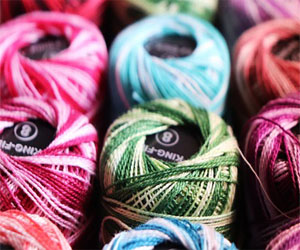 Exploring The Rich World Of Decorative Stitching: Decorative stitching encompasses a wide array of techniques, each offering a unique way to embellish and beautify fabrics. While the art of sewing often serves a functional purpose, decorative stitching goes beyond utility to infuse items with a touch of artistic flair.
Exploring The Rich World Of Decorative Stitching: Decorative stitching encompasses a wide array of techniques, each offering a unique way to embellish and beautify fabrics. While the art of sewing often serves a functional purpose, decorative stitching goes beyond utility to infuse items with a touch of artistic flair.
Embroidery: The Timeless Embellishment
Embroidery is one of the most celebrated forms of decorative stitching. This intricate craft involves the use of various stitches, threads, and colors to create patterns, designs, and images on fabric. Whether it's delicate floral motifs, intricate lacework, or intricate monograms, embroidery adds a personal and artistic touch to everything from clothing to home furnishings.
Quilting: Stitching Stories In Fabric
Quilting is another form of decorative stitching that marries functionality with artistic expression. Quilters use stitches to join layers of fabric and create intricate designs that often narrate stories or reflect cultural traditions. From patchwork quilts to intricately stitched bedspreads, quilting is a testament to both creativity and craftsmanship.
Appliqué: Layering For Impact
Appliqué is a technique that involves sewing one piece of fabric onto another, often in a layered or patchwork manner. It allows for the addition of different textures, colors, and patterns to create striking and vibrant designs. Appliqué is commonly used in clothing, accessories, and textile art.
Beadwork And Sequins: Adding Glamour And Sparkle
Decorative stitching also encompasses the use of beads, sequins, and other embellishments to elevate textiles. These tiny elements are sewn onto fabric in intricate patterns to add glamour, sparkle, and a touch of opulence. Beaded embroidery is commonly found on wedding gowns, eveningwear, and accessories.
Tips For Small And Large Gardens
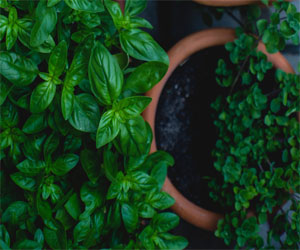 Select containers with proper drainage and consider hanging pots, window boxes, or vertical herb gardens.
Select containers with proper drainage and consider hanging pots, window boxes, or vertical herb gardens.
Group compatible herbs in a single pot or use tiered plant stands to stack multiple containers vertically.
Regularly prune and harvest your herbs to maintain their size and prevent overcrowding.
Indoor Herb Gardens
If you have limited outdoor space, an indoor herb garden can provide fresh herbs year-round. Some tips for indoor gardening include:
Place pots on windowsills or under artificial grow lights to ensure they receive adequate sunlight.
Consider using self-watering pots or hydroponic systems to make indoor herb gardening more convenient.
Be attentive to indoor humidity and ventilation to prevent issues like mildew or pests.
Keep pots near the kitchen for easy access to fresh herbs while cooking.